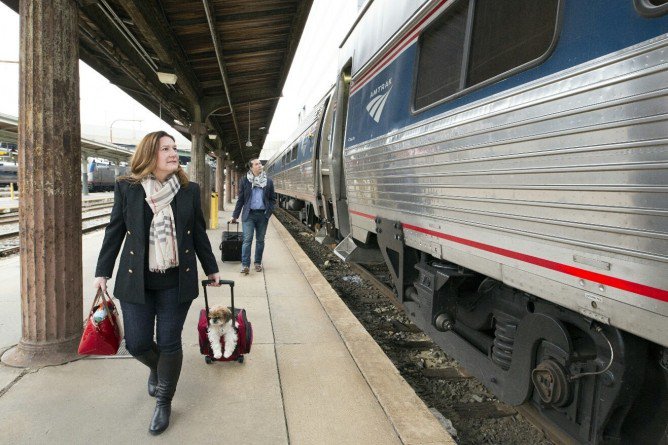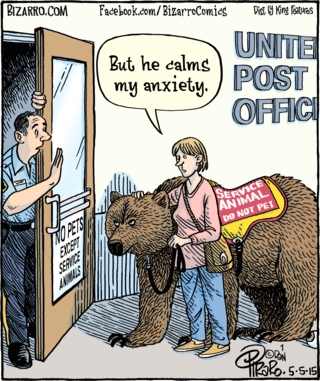Amtrak Going to the Dogs and Cats.
I really don’t know for sure if Amtrak’s program allowing pets on their trains will work out in the long run for both pet owners and Amtrak, but that doesn’t matter. The fact is, it’s now official—the pilot program has been pronounced a success and is now permanent.
Technically, the no-pet restriction still applies to the Acela trains, but a pilot program is underway there, permitting pets on those trains during weekends until the end of June when, presumably, a final decision will be made.

In addition to a $25 fee per pet, there are quite a number of restrictions: a 20-pound limit, and all pets have to be in legitimate carriers—meaning the kitten in your purse won’t pass muster. The program is for dogs and cats only and there’s also a limit of no more than five pets on any one train, so reservations should be made well in advance. And finally, pets can’t be on a train for more than seven hours. There are a few other restrictions which are listed in detail on the Amtrak web site.
During the time the program was being tested, more than 4,600 pets were transported which, according to Amtrak, generated $500,000 in new revenue. And, according to an Amtrak spokesperson, there were no major problems during the trial period, either with the pets or, far more important, from the rest of the passengers.
I must note, however, that Amtrak’s math doesn’t appear to work out. At $25 each, 4,600 pets would generate revenues of $115,000, so it’s unclear how they arrived at the half million dollar figure. And there were no numbers provided to tell us what it costs Amtrak to administer the program. The revenue aspect is pretty much immaterial, however. If this proves to be a popular program, it should make travel on Amtrak more attractive to more people and we’re in favor of whatever does that.

There is a related issue, however, that’s sticky and which won’t go away: passengers falsely claiming that a pet is a “service animal”. It could be a 100-pound mastiff or a six-inch long chameleon, but it’s risky to challenge the claim because there’s a very real risk the Amtrak employee could be accused of intruding on personal medical information.
Amtrak’s official policy is purposely vague, but does say a passenger may be asked what specific tasks the animal performs in order to qualify as a service animal. My guess is that most on board employees will happily pass on that option except in the most egregious instances.
No one promised any of this would be easy.



I would guess the half million revenue figure includes the passenger fares, who would otherwise have traveled by air in order to transport their pets.